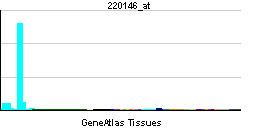Species Human Entrez 51284 | Human Mouse Ensembl ENSG00000196664 | |
 | ||
Aliases TLR7, TLR7-like, toll like receptor 7 External IDs OMIM: 300365 MGI: 2176882 HomoloGene: 75060 GeneCards: TLR7 | ||
Toll-like receptor 7, also known as TLR7, is a protein that in humans is encoded by the TLR7 gene. Orthologs are found in mammals and birds. It is a member of the toll-like receptor (TLR) family and detects single stranded RNA.
Contents
Function
The TLR family plays an important role in pathogen recognition and activation of innate immunity. TLRs are highly conserved from Drosophila to humans and share structural and functional similarities. They recognize pathogen-associated molecular patterns (PAMPs) that are expressed on infectious agents, and mediate the production of cytokines necessary for the development of effective immunity. The various TLRs exhibit different patterns of expression. This gene is predominantly expressed in lung, placenta, and spleen, and lies in close proximity to another family member, TLR8, on the human X chromosome.
TLR7 recognizes single-stranded RNA in endosomes, which is a common feature of viral genomes which are internalised by macrophages and dendritic cells. TLR7 recognizes single-stranded RNA of viruses such as HIV and HCV,. TLR7 can recognize GU-rich single-stranded RNA. However, the presence of GU-rich sequences in the single-stranded RNA is not sufficient to stimulate TLR7.
Clinical significance
Imiquimod acts upon TLR7.
TLR7 has been shown to play a significant role in the pathogenesis of autoimmune disorders such as Systemic Lupus Erythematosus (SLE) as well as in the regulation of antiviral immunity. Although not yet fully elucidated, using an unbiased genome-scale screen with short hairpin RNA (shRNA), it has been demonstrated that the receptor TREML4 acts as an essential positive regulator of TLR7 signalling. In TREML4 -/- mice macrophages that are hyporesponsive to TLR7 agonists, macrophages fail to produce type I interferons due to impaired phosphorylation of the transcription factor STAT1 by the mitogen-activated protein kinase p38 and decreased recruitment of the adaptor MyD88 to TLR7. TREML4 deficiency reduced the production of inflammatory cytokines and autoantibodies in MRL/lpr mice, suggesting that TRL7 is a vital component of antiviral immunity and a predecessor factor in the pathogenesis of rheumatic diseases such as SLE.
